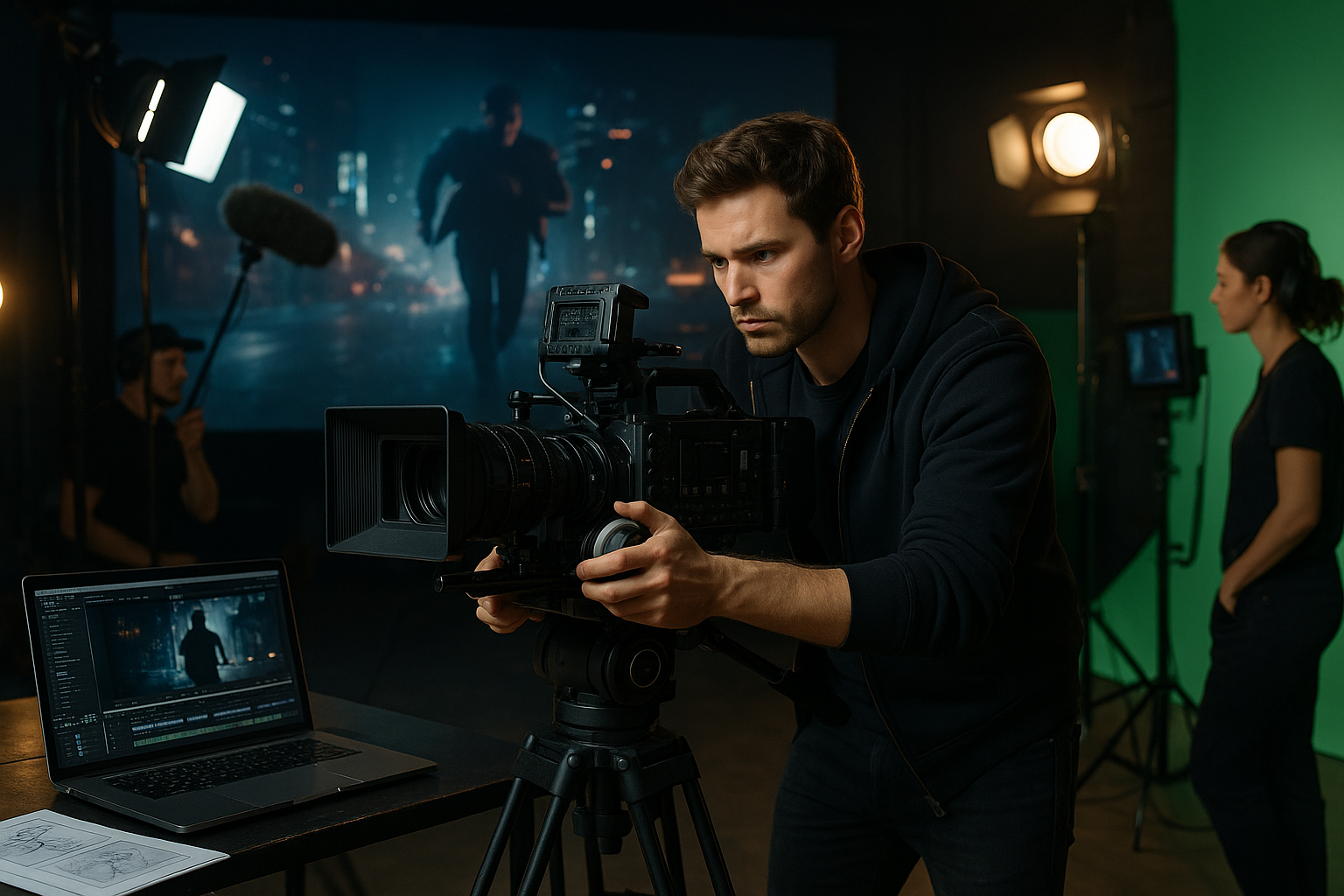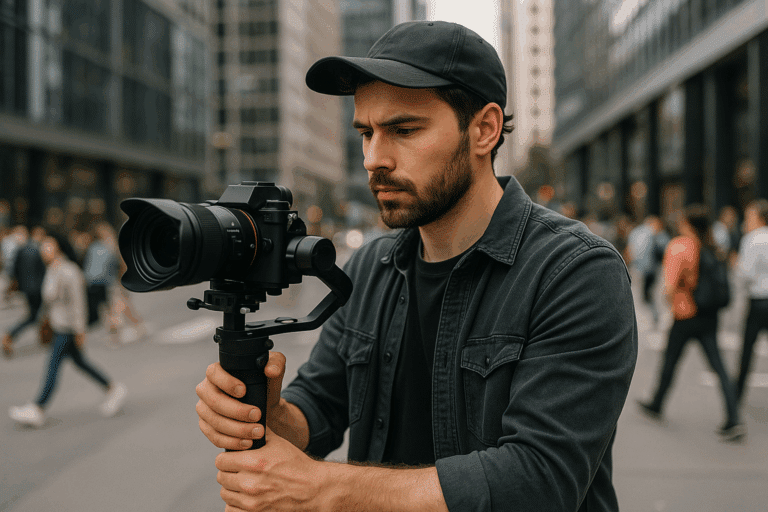Imagine for a moment, you’re in a theatre, popcorn in hand, the room darkens, the murmur of anticipation quiets, and the screen comes alive. The opening scene of a movie unfolds and within a fraction of a minute, you’re hooked. It’s those fast cinematic openings, they never fail to capture our attention, do they?🎬🍿
But have you ever wondered how these masterpieces are crafted? What goes behind creating such riveting, engaging openings that leave audiences on the edge of their seats? If you’re a budding filmmaker or a curious cinephile, this is where you’ll find your answers. Welcome to our comprehensive guide on ‘Mastering Fast Cinematic Openings for Maximum Impact’.
In this blog post, we’re going to delve into the mechanics of fast cinematic openings, dissecting their structure, discussing the techniques used by the best in the industry, and unraveling the secrets of creating an unforgettable opening for your next film project. 🎥
However, before we dive in, it’s essential to understand why we’re placing so much emphasis on the opening scene. Think of it as a first impression; it’s your one shot to captivate the audience’s attention and keep them glued for the rest of the film. The right kind of fast opening can set the tone, establish the film’s pace, introduce characters, and give a taste of the narrative style. It’s a tall order, but with the right techniques and a dash of creativity, it’s an achievable task. 🚀
The Structure of Fast Cinematic Openings
Fast cinematic openings are not just about speed; they are about efficiency. It’s about introducing critical elements of the narrative as quickly and effectively as possible. We’ll take a closer look at the various components that make up this structure and how filmmakers manipulate them for maximum impact.
Techniques of the Masters
From Alfred Hitchcock to Christopher Nolan, masters of cinema have their unique approaches to fast cinematic openings. We’ll dissect some of their most iconic opening scenes, understand the techniques they employed, and how they managed to capture the audience’s attention within mere minutes.
Creating Your Own Fast Cinematic Opening
Drawing from the insights gathered, we’ll guide you step by step on crafting your fast cinematic opening. Whether you’re a novice filmmaker working on a short film or an experienced director looking to up your game, this section will equip you with the necessary tools and techniques. 🛠️
As we embark on this exploration of fast cinematic openings, remember that filmmaking, at its heart, is about storytelling. Whether it’s a sweeping epic or a short indie film, it’s the story that keeps audiences engaged. And your opening scene is the first page of that story. Make it count!🌟
Let’s dive in!
Embarking on the Journey: Understanding the Importance of Fast Cinematic Openings
As a seasoned technical writer with a background in software engineering, I have a deep appreciation for the art and science behind creating captivating cinematic openings. A film’s opening scene sets the tone for the entire movie, providing the audience with initial clues about the plot, the characters, and the overall mood of the narrative. In today’s fast-paced digital age, capturing your audience’s attention right from the start is more important than ever. Let’s dive into the technical aspects of creating fast cinematic openings for maximum impact.
Whether you are a seasoned filmmaker or a novice just starting out, understanding the elements of a powerful cinematic opening can greatly enhance the overall storytelling experience. The first few minutes of a film are critical in engaging the audience, setting the tone and providing context for the narrative that unfolds.
Creating a fast, impactful cinematic opening is not an easy task, but it can be made more manageable by understanding some key principles. These include the use of sound and music, visual techniques, and storyboarding, among others. To help clarify these concepts, I’ll be referencing the video “How to Make a Great Movie Opening” by Film Riot, a highly respected channel for aspiring filmmakers on YouTube.
🎬 The Role of Sound and Music in Cinematic Openings
Sound and music are key elements in setting the mood and atmosphere for a film. The right music can help convey the emotions that the filmmaker wants the audience to feel, while sound effects can enhance the realism of the scenes.
In a fast cinematic opening, the use of sound and music is even more critical. The soundscape needs to quickly engage the audience and create a sense of anticipation. This could be achieved through a dramatic orchestral score, the use of diegetic sounds to set the scene, or even the strategic absence of sound to create tension.
It’s worth noting that the use of sound and music should be carefully planned during the pre-production stage to ensure it aligns with the overall narrative. To see the power of sound and music in action, I recommend watching the video “The Art of Sound Design: Behind the Scenes with the Masters of Sound” by Film School from YouTube.
The Power of Visual Techniques
A film’s opening scene is often its most visually striking, designed to instantly draw the viewer into the world of the narrative. The choice of camera angles, the use of color and lighting, and the composition of the shot all contribute to creating a visually engaging opening.
In a fast cinematic opening, these visual elements need to work even harder to quickly establish the setting and tone. Filmmakers may employ rapid cuts, dynamic camera movements, or visually stunning special effects to captivate the audience right from the start.
It’s important to remember, though, that the use of visual techniques should serve the story, not distract from it. For a deeper dive into the art of visual storytelling, check out the YouTube video “Visual Storytelling 101” by Film Riot.
Storyboarding: Planning for Impact
Storyboarding is an essential part of the filmmaking process, allowing directors to visualize the narrative and plan the sequence of events in a film. This is especially important for fast cinematic openings, where the pacing and progression of the scenes need to be tightly controlled to ensure maximum impact.
A storyboard can also help the filmmaker identify potential issues or gaps in the narrative before filming begins, saving time and resources. In the video “How to Storyboard: A Basic Guide for Aspiring Filmmakers” by Indy Mogul on YouTube, you can gain valuable insights into the process of creating effective storyboards.
Remember, a fast cinematic opening is not just about speed, but also about precision and impact. It requires careful planning and execution, as well as a deep understanding of the cinematic elements at play. By mastering these techniques, you can create captivating openings that will engage your audience from the very first frame.

Conclusion
As we reach the conclusion of our in-depth exploration into the world of software engineering, it’s essential to revisit and recap the key concepts we’ve delved into, solidifying our understanding and enhancing our comprehension of this technical, yet fascinating subject matter.
We started our journey by discussing the foundational principles of software engineering, emphasising its critical role in the present digital era. We explored the different software development methodologies, from Waterfall and Agile to DevOps and Scrum, and examined how each of them contributes to the efficiency of software production processes. 💡
Diving deeper, we ventured into the realm of coding languages, dissecting popular ones like Java, Python, and C++, while analysing their respective strengths and applications. An exploration of data structures and algorithms further enriched our understanding of the backbones of programming. 🖥️
Our article then transitioned into the specifics of system design, database management, and network architecture. We detailed how these aspects interrelate and contribute to the efficient working of a software system. The role of testing and quality assurance in delivering a robust, error-free software product was also underscored, emphasising their importance in the software development lifecycle. 🔄
We dedicated a section to emerging trends in software engineering, touching upon exciting developments like artificial intelligence, machine learning, and cybersecurity. We examined their potential implications for the field and how they are redefining traditional software engineering practices. 🚀
We also touched on the ethical and professional responsibilities of software engineers, reminding ourselves that our work should always respect the principles of honesty, integrity, and public welfare.
In conclusion, software engineering is a dynamic, evolving field that demands continuous learning and adaptation. It plays a pivotal role in shaping the digital world we live in today, making it an incredibly exciting field to explore and master. 🎯
We hope this article has provided you with valuable insights into the intricacies of software engineering. The aim was not just to impart technical knowledge, but to inspire you to delve deeper, ask more questions, and fuel your passion for the subject. 📚
We encourage you to share your thoughts, experiences, and insights on the topic in the comments section below. Feel free to share this article with others who might find it interesting or beneficial. Also, apply the knowledge you’ve gained here in your real-world projects, and see the magic unfold! ✨
Don’t forget to check out our reference materials for further reading:
1. Software Engineering – Britannica 📘
2. IEEE Computer Society – Technical Committee on Software Engineering 📗
3. Software Engineering – ScienceDirect 📙
Thank you for reading, and here’s to a future where technology and humanity coalesce in perfect harmony! 🌐🤝
Remember, the journey of a thousand miles begins with a single step, and you’ve just taken a significant stride in your software engineering journey. So, keep learning, keep growing, and most importantly, keep coding! 💻💡🚀
#softwareengineering #programming #coding #development


